

Max Davies
2026 GWM Haval Jolion review
2 Hours Ago
Tipping the scales at over 3000kg, the Rivian R1S is a whopper. But, is it any good as an electric SUV?
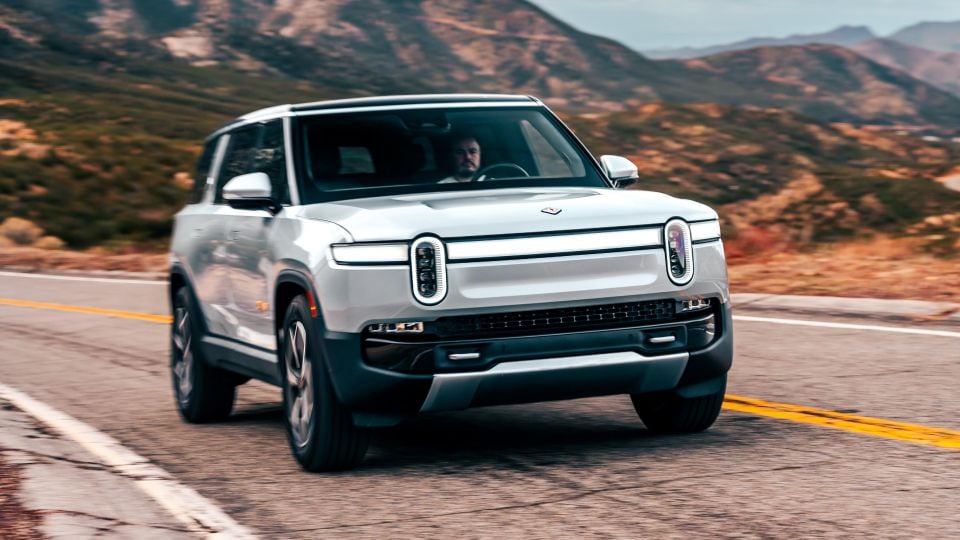
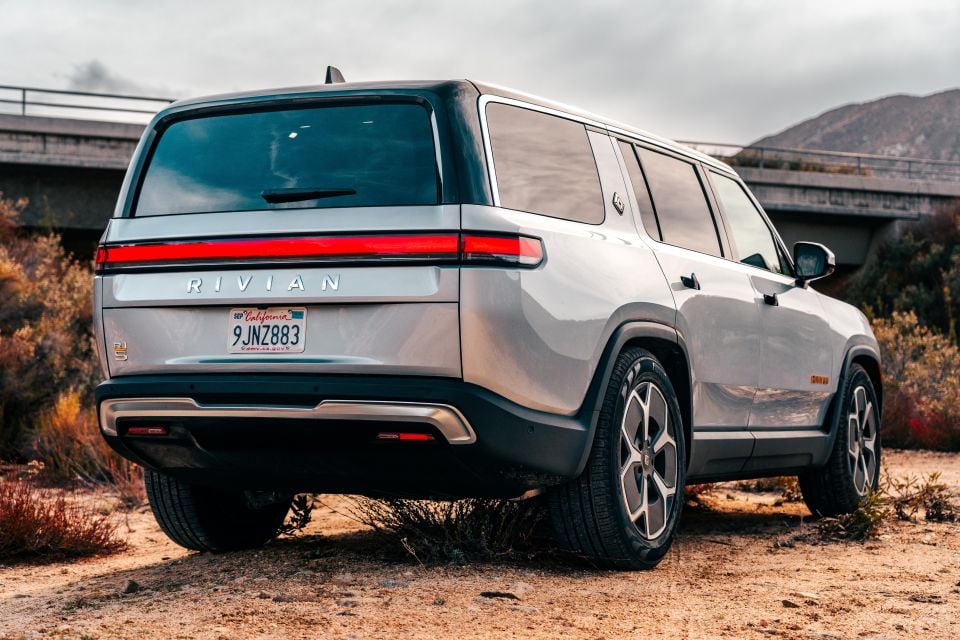

Founder

Founder


Founder

Founder
Where expert car reviews meet expert car buying – CarExpert gives you trusted advice, personalised service and real savings on your next new car.
As an electric car owner in Australia, I’ve always wondered what it’d be like to get behind the wheel of a big adventure-focused EV.
Unfortunately we don’t get Rivians in Australia; but the opportunity came up to rent a Rivian in the US, so we thought we’d give it a shot to see what it’s like.
We rented a 2024 Rivian R1S Adventure quad-motor and headed for the hills to find some corners and see how practical this big SUV would be. We only had a day with the vehicle, so this will be a more condensed, brief version of our typical reviews.
Rivian sells a dual-cab ute called the R1T and this seven-seat SUV called the R1S. Both can be configured either as primary highway vehicles, or configured with all-terrain tyres and accessories for those with a more adventurous bent.

Pricing for the R1S kicks off from US$74,900 (A$115,000) before on-road costs and the quad-motor option adds a further US$8000 to the asking price, which comes out to US$92,000 (A$141,000) before on-roads.
While the mid-spec Performance dual-motor and entry-level dual-motor can be optioned with larger battery packs, the top-spec version comes with a 135kWh battery. Optioning the 149kWh Max battery pack adds a further US$19,100 to the asking price on the base and mid-spec Performance models.
There are a number of additional accessories you can also option, but the headline acts are non-standard paint at US$2500 and the all-terrain package for US$3600, which includes all-terrain tyres and underbody protection.
Buy your new car without the stress. It's fast, simple and completely free.

Great service from Travis and team, second time I have used this business would not hesitate to recommend them to anyone
Craig C.
Purchased a Ford Ranger in Sunshine Coast, QLD
CarExpert helped Craig save thousands on his Ford Ranger, now let us save you on your next new car.
Find a dealWhile the R1S looks pretty cool on the outside (styling, of course, being subjective), it’s inside the cabin where they have hit the ball out of the park.
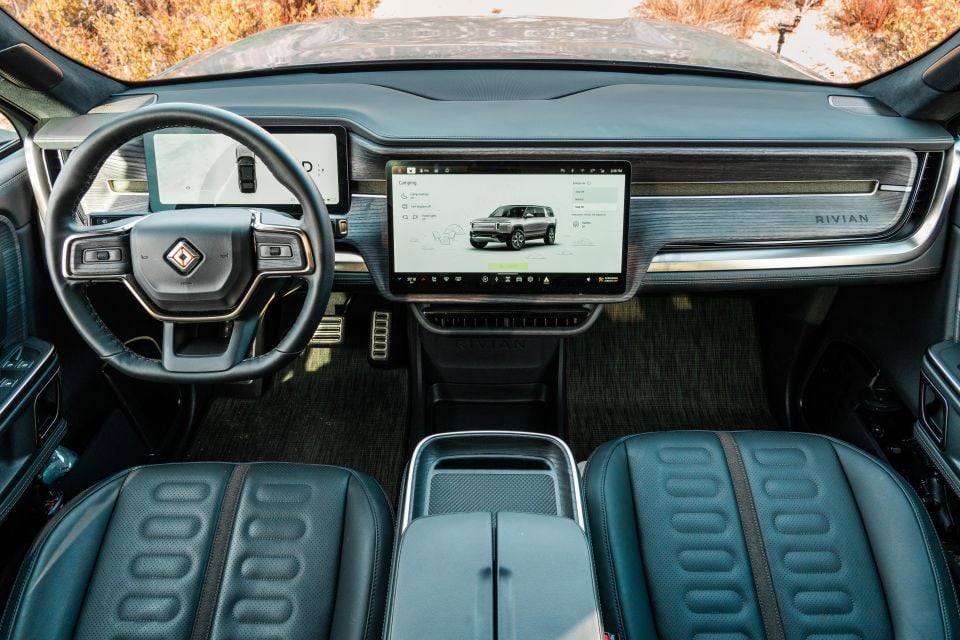
It’s futuristic, but minimalist and functional at the same time. Rivian have kept it adventure ready, but included enough luxury to make you feel better about dropping about $150,000 on one.
Even clever features like hard-wearing elastic door pockets, through to a large portable Bluetooth speaker that slots beneath the centre console have been considered. I loved the key too – it featured a rubber finish, but also had a clip to attach to your pants – simple, but again focussed on the adventure types.
Just like Tesla, most of the fun features sit within the central 15.6-inch display. The display is sharp, very fast and easy to use. Everything is logically placed and built into the screen are all of your audio streaming functions, satellite navigation and connectivity features.
But disappointingly, you won’t find Apple CarPlay or Android Auto. Owners instead need to use aftermarket options to achieve this fairly basic functionality.
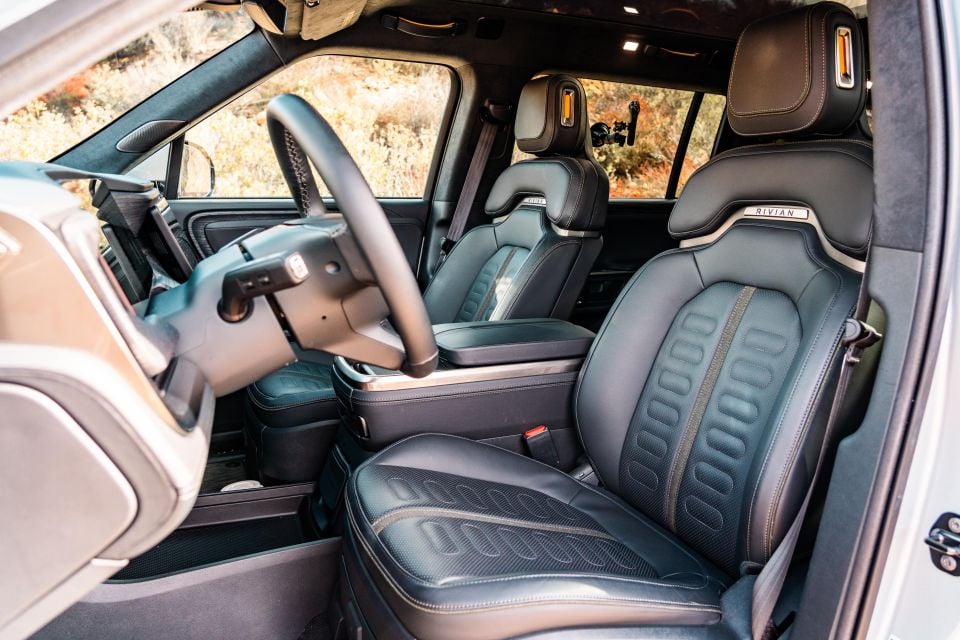
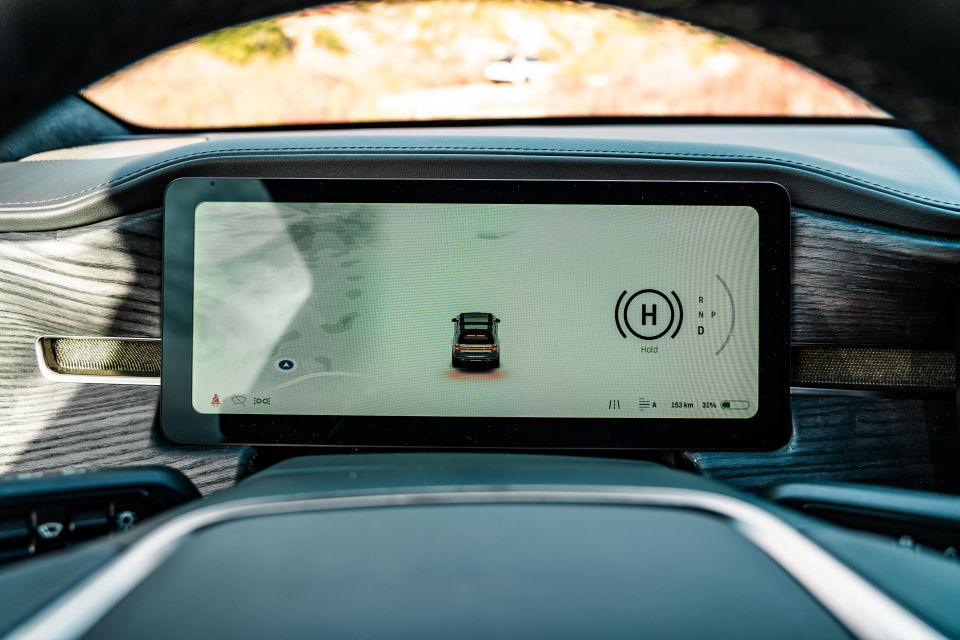
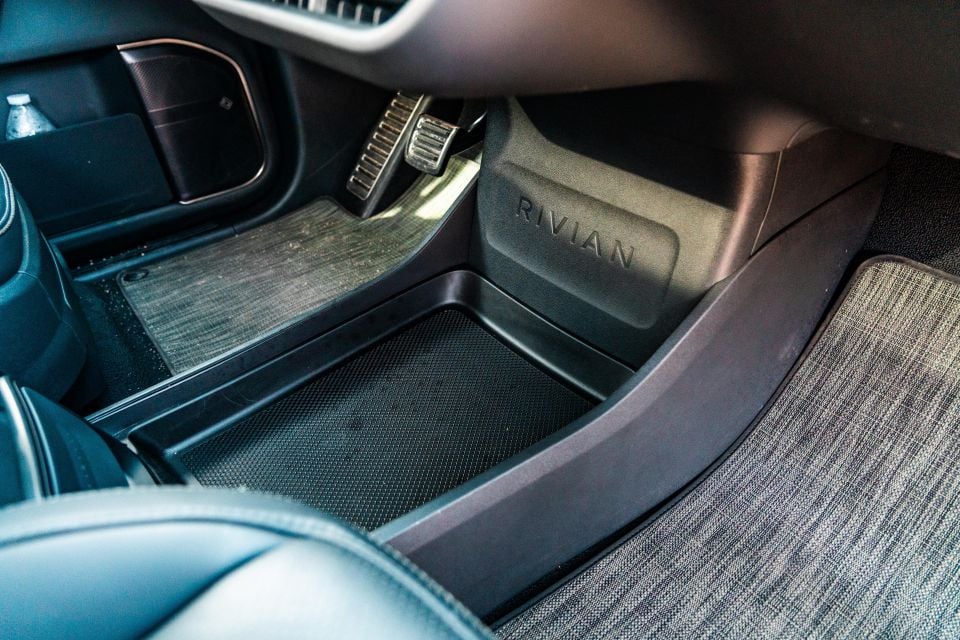
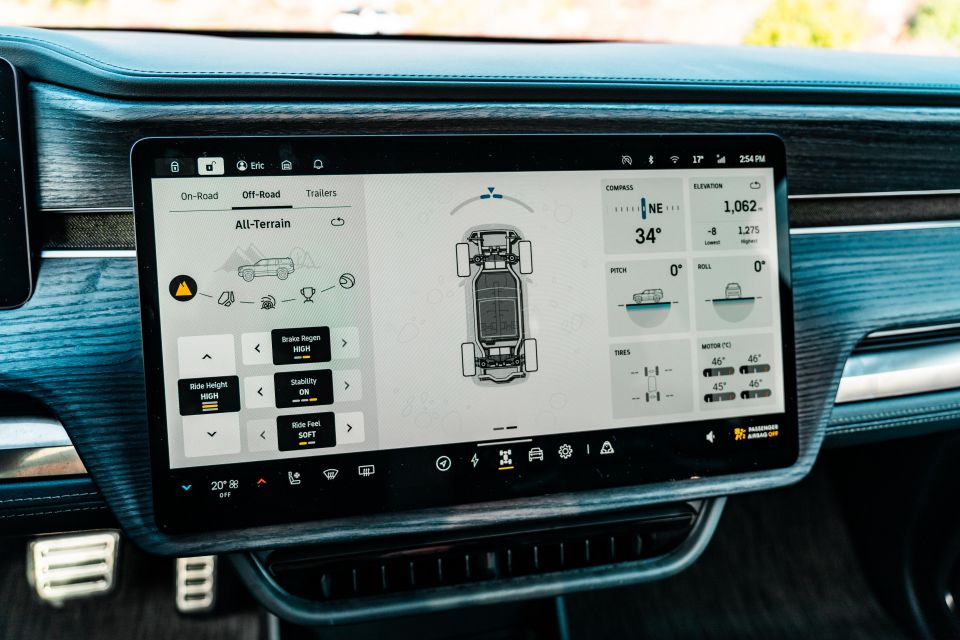
Also disappointingly, Rivian dropped their partnership with Meridian and as a result speaker count dropped to 18 speakers. While it’s still a huge speaker count, there’s no brand visible and the audio quality is pretty average for what should be a fairly premium offering.
It was also disappointing to see the poor build quality. Some of the panels on our car were misaligned and inside the cabin you could hear creaking when pushing on some door surfaces or driving across uneven road surfaces.
Our car also presented a suspension air compressor overheat warning at one point that prevented the vehicle from being able to go up or down as part of a change in drive modes.
Outside of this, the interior was nicely presented with open pore woodgrain along the dashboard, a stack of room in both the first and second rows, along with a litany of USB connectivity and power outlets for vehicle-to-load functionality.
Clever outdoor features included a camp mode that would level the vehicle for sleeping and the ability to control battery use, exterior lighting and climate while camping. There was even a mode that would put the vehicle into a quiet mode so as to not disturb those camping around the vehicle.
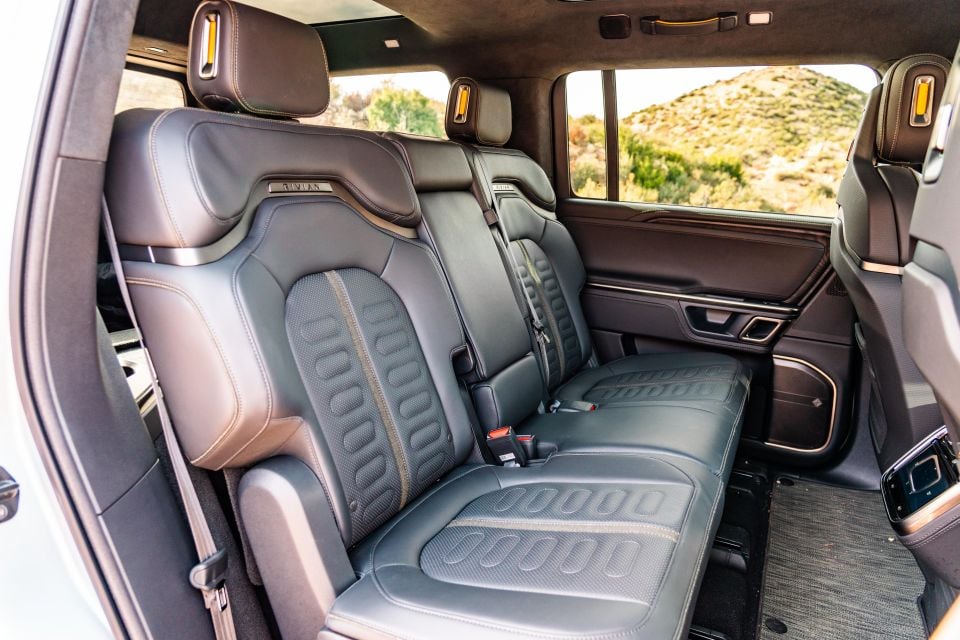
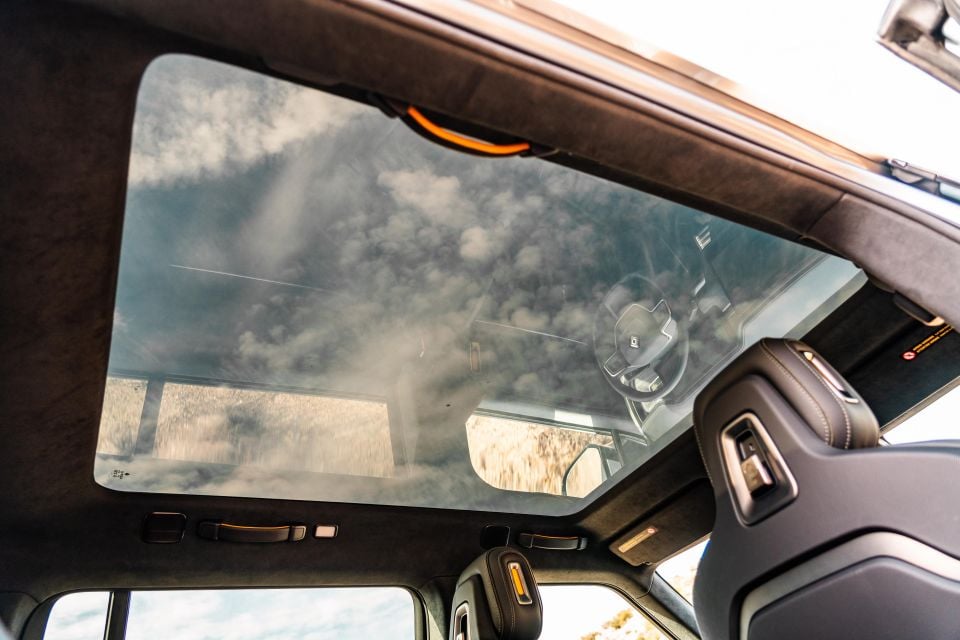
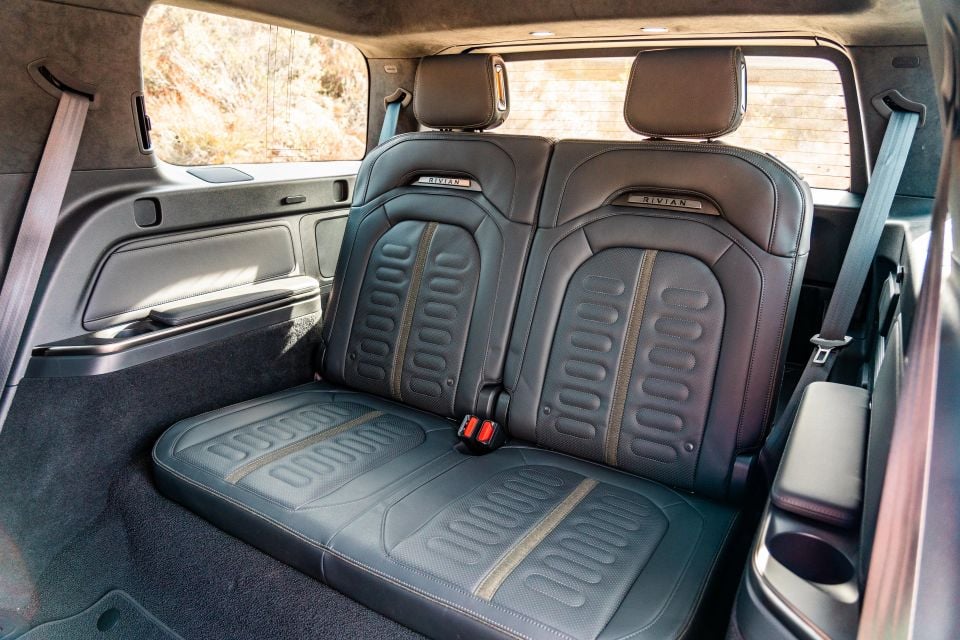
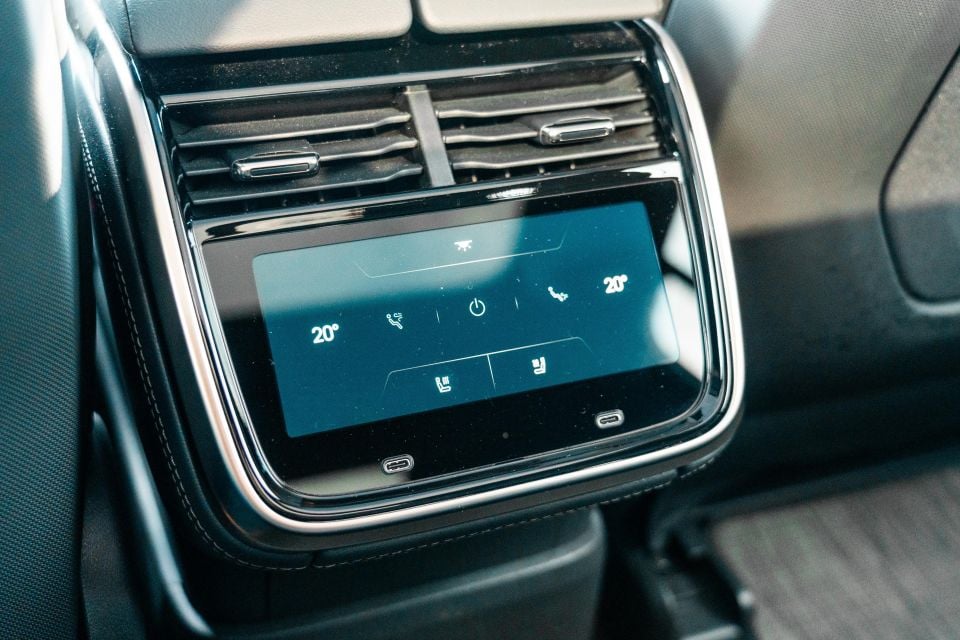
The third row was a bit cramped for adults, but there’s plenty of room for kids and it was easy to climb into and out.
Adults can afford themselves slightly more knee room by sliding the second row forward or dropping the centre portion of the second row for more knee room. Back there you’ll also find a storage bin, more charging and air vents.
Cargo capacity comes in at 498 litres behind the third row, 1331L with the third folded (keep in mind it doesn’t fold flat) and 2498L with the second and third rows folded. In addition to these you’ll find 314L of storage within the electronically controlled and opening front boot and 144L in the rear bin beneath the cargo floor.
For such a big vehicle they’ve been able to cram a heap of storage within as many spaces as they could find, which is great news.
The R1S quad-motor uses four electric motors – that’s one on each wheel.
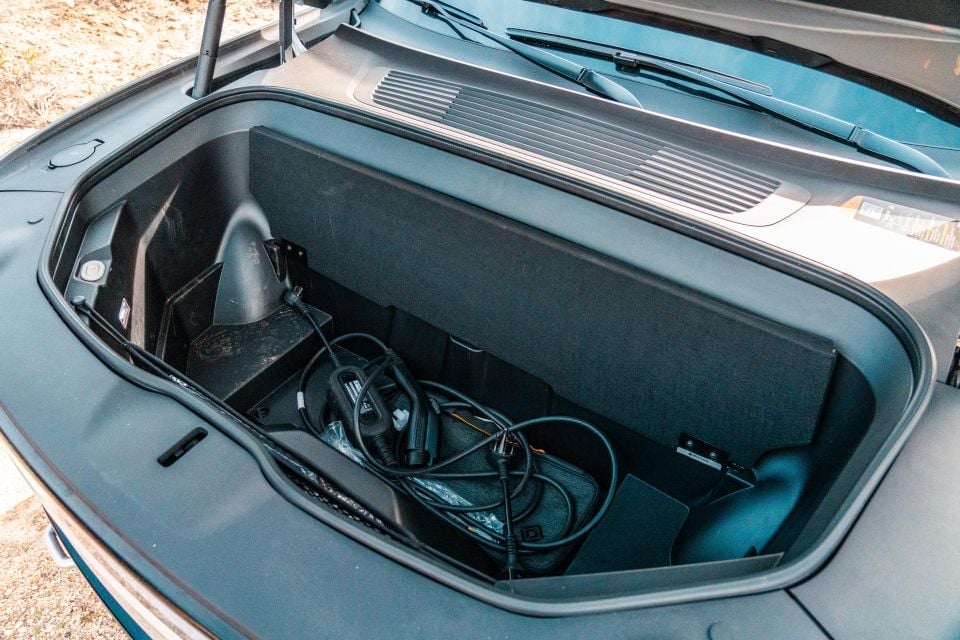
This type of motor distribution not only gives you granular torque control for scenarios like off-road driving, but also allows somewhat useless functions like tank turns (which Rivian showed as a marketing stunt, but a function you can’t actually use as a customer).
These four motors offer a combined 623kW of power and 1231Nm of torque. It’s an absolutely stupendous amount of grunt. You also can’t deny how heavy this thing is with a 135kWh battery and four electric motors. It tips the scales at around 3200kg – that’s before you and the family sit inside it. That also means a big turning circle of 13.2 metres.
But with four motors comes cracking acceleration. It’ll do 0-60mph (0-97km/h) in just 3.0 seconds. Our testing delivered a 0-100km/h time of around 3.7 seconds – so a little off the claim, but we were going to around 62mph (100km/h) and also were testing with a lower battery level, which affects straight-line acceleration performance.
Combined energy economy comes out to 33.5kWh/100km, which is around 100 per cent higher than something like a Tesla Model Y – granted, a Model Y isn’t this size, this capable off-road and doesn’t have seven seats in Australia; but I’m just using it as a point of reference.
During our time with the car the battery size also highlighted one of the big issues with wall charging in the US. The 120V electrical architecture means the vehicle can’t charge at the same power level as we can in Australia.
The simple Ohm’s law for a DC circuit states that power is voltage multiplied by current. By halving the power, you also halve the power output. In the case of US power circuits they run at a slightly higher current, but not enough to overcome the halving of voltage.
At one point when we tried to charge the vehicle from a domestic power socket, it showed a charging time of around 150 hours or equivalent to six days. There was a further saga with public charging, but we’ll cover that in more detail in a future video.
One of the first things I noticed when we drove away from the rental place in Los Angeles was how poorly tuned the ride was. It crashed over minor imperfections and was very busy – and this was in the ‘soft’ setting. Moving that setting over to ‘stiff’ made the ride diabolically bad.
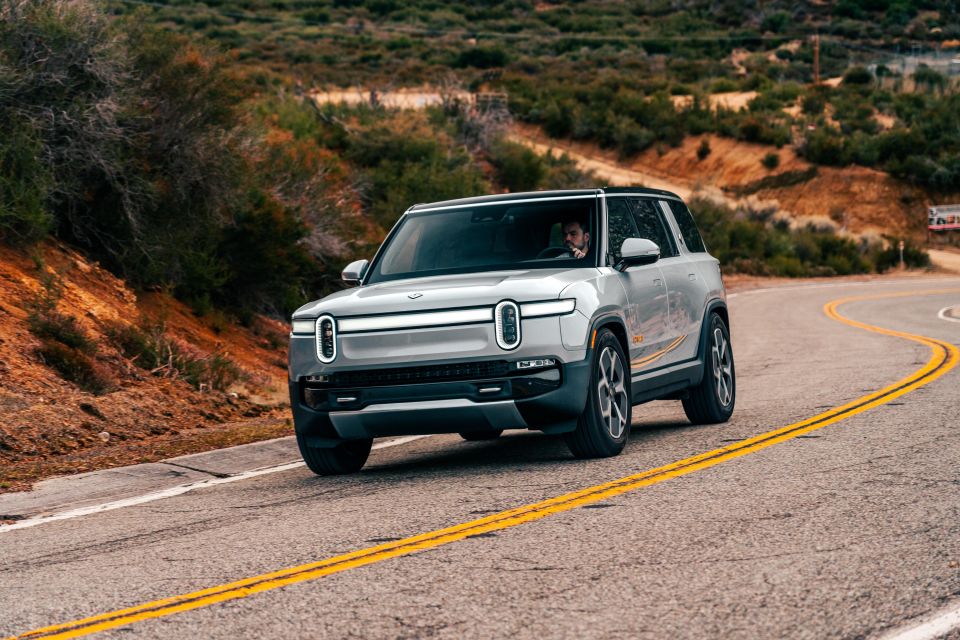
Initially I thought the tyre pressures weren’t set correctly, but we double checked those. A lot of it will come down to the vehicle riding on 21-inch alloy wheels, the smallest wheel size before you move to the chunkier all-terrain tyres.
If you isolate the ride though, the rest of the package is pretty decent. Acceleration is next level – regardless of which drive mode you’re in. Just punch the throttle and it throws you back into the seat like a small sports car.
The regen is great and it also has a single-pedal driving mode that works really well. The steering is a bit vague, but good enough for a vehicle this size.
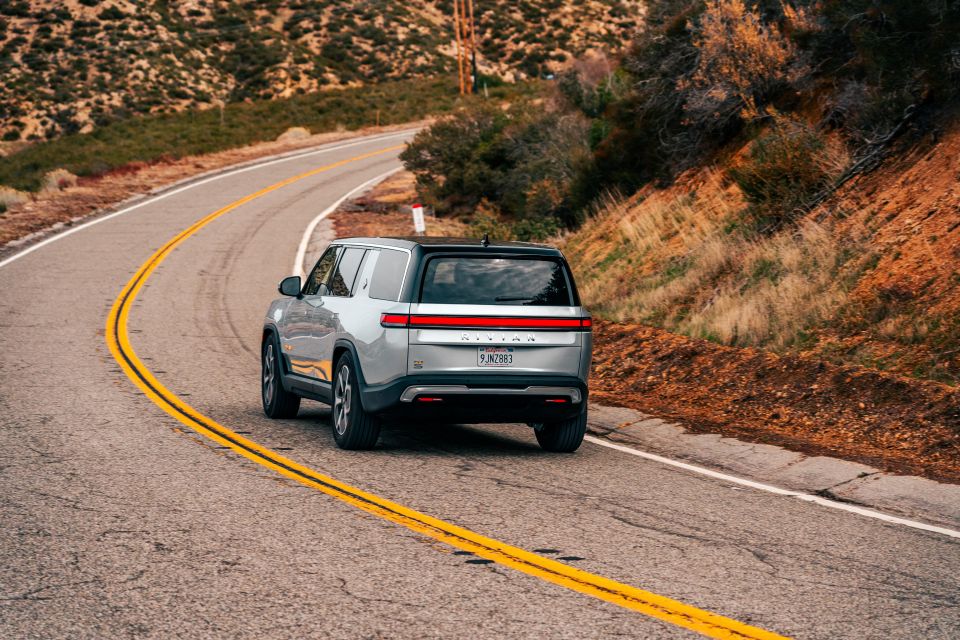
We didn’t get much of a chance to test out the Drive+ functionality (Rivian’s terminology for Level 2 autonomy), but the brief test we did on the freeway showed a high level of confidence and an ease of use. Unlike Tesla, Rivian uses a mix of cameras, radar and ultrasonic sensors for its suits of parking and autonomy technology.
Speaking of cameras, I was pretty surprised at how poor the camera quality was for Gear Guard (Rivian’s camera-based security system) and for the parking cameras. They were low quality and didn’t offer a great deal of detail in comparison to other modern vehicles on the market.
We found a nice mountain road to stretch the R1S’s legs and it really exacerbated the poor ride. As the speed picked up it would crash over road joins and changes in elevation. It felt super heavy through corners and the brakes didn’t deliver a great deal of confidence.
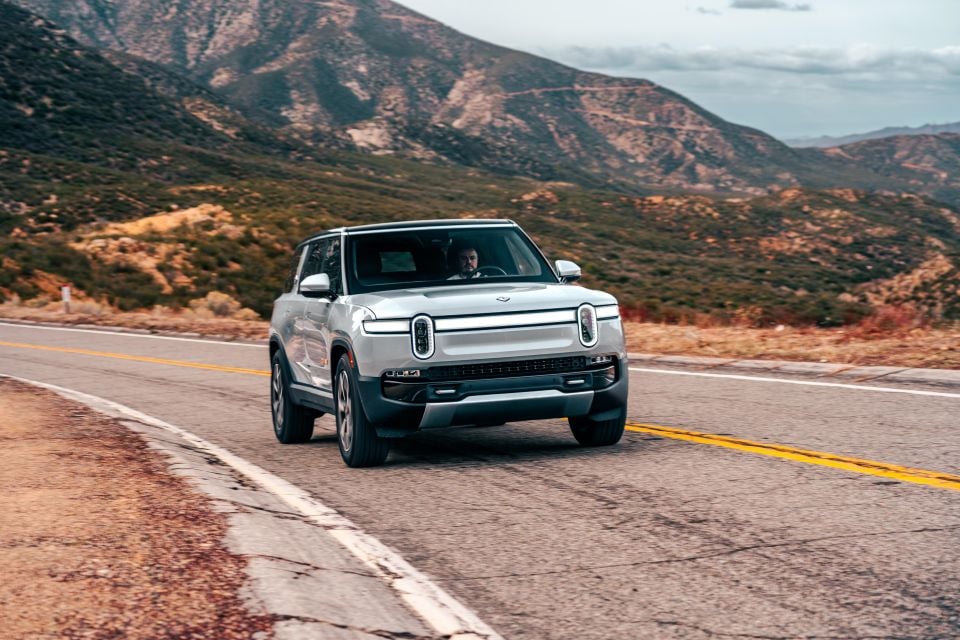
There’s only so much you can do with a vehicle that weighs this much – physics will always win when you try and feel that much torque through four small patches of rubber.
If you intend to drive the R1S off-road, it has some pretty meaty specs. We’re talking a standard ground clearance of 203mm before you jack the ride up – it can then climb to 378mm.
Approach and departure angles are 35.6 and 34.3 degrees respectively, while wading depth is an insane 1084mm. There are also rated recovery points with rubber backs to prevent damage during recovery attempts.
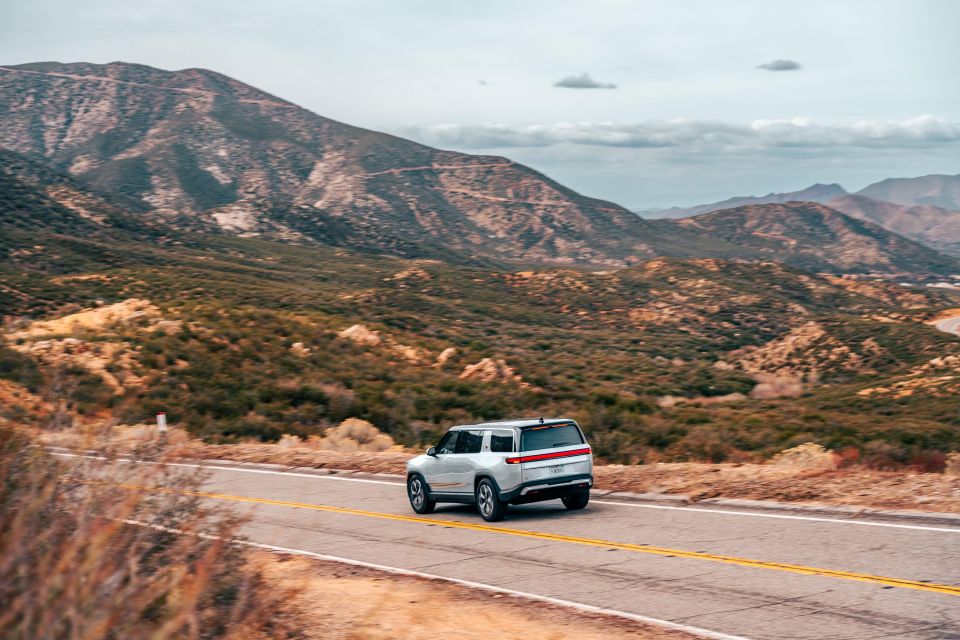
In terms of actual driving range and charging speeds, the 135kWh battery can be charged at a maximum DC charging speed of 210kW with an average 125kW charge speed. AC charging can occur over three phases at up to 11.5kW.
In this specification there’s a claimed 516km of driving range (321 miles).
So this was only a short drive in the Rivian R1S, but it showed the brand still has a bit of work to do.
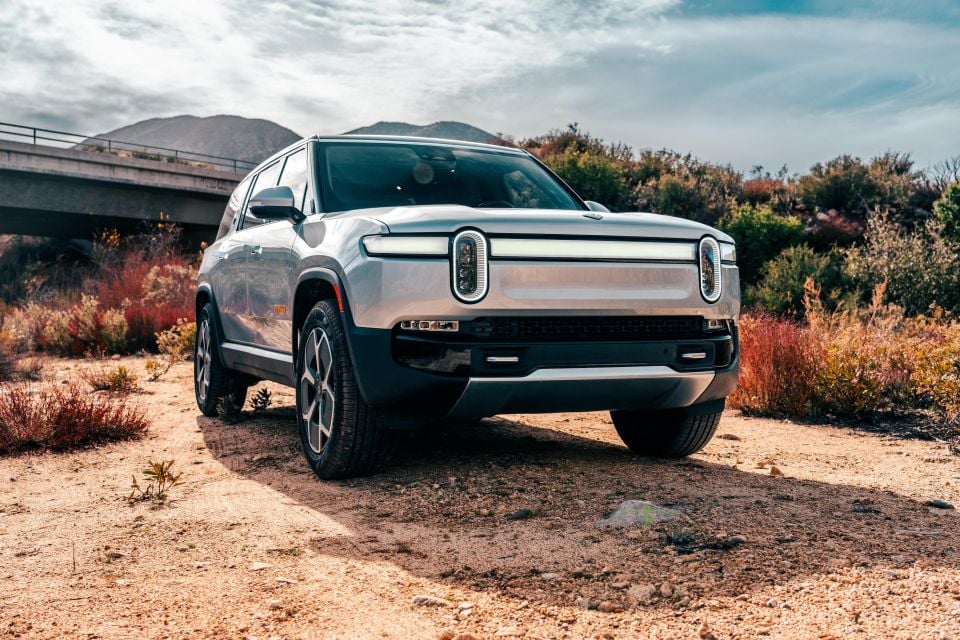
The ride needs improvement, as does the handling and steering. Attention and also needs to be shown to build quality. But, thankfully, all of these things are relatively easy to fix if you hire the right people and pay enough attention to them.
With these things addressed, Rivian has a great looking vehicle that is built for an adventurer with a big family. There’s a smaller version of the R1S being revealed in the coming weeks and it’s likely to show a more progressive and sedate approach to the formula on offer with the R1S and we’re excited to see what that’s like.
We’d also love to see these on sale in Australia eventually – I could definitely see an R1T in my future.
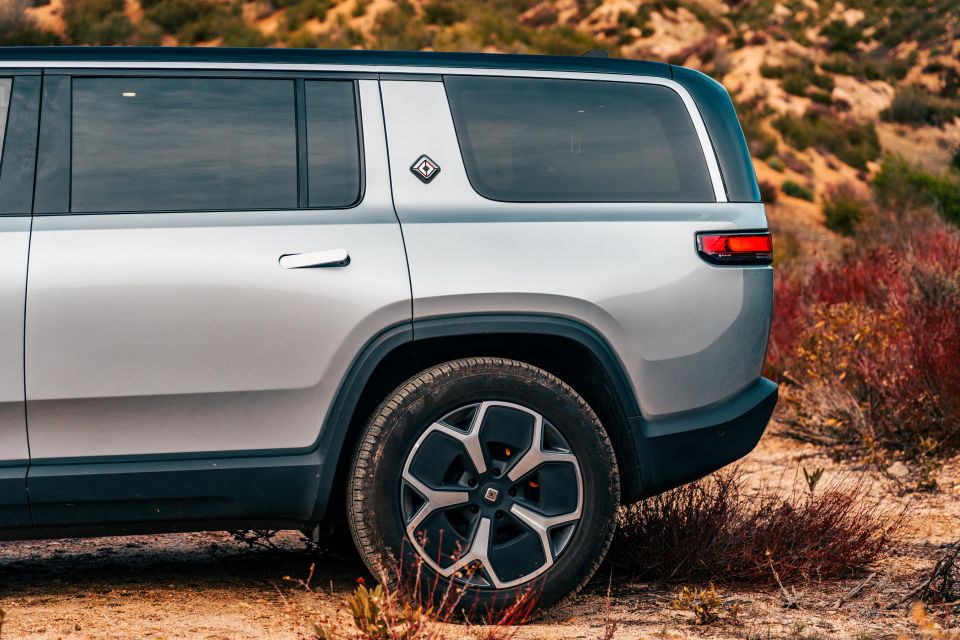
Click the images for the full gallery
Where expert car reviews meet expert car buying – CarExpert gives you trusted advice, personalised service and real savings on your next new car.
Paul Maric is a CarExpert co-founder and YouTube host, combining engineering expertise with two decades in automotive journalism.


Max Davies
2 Hours Ago


Damion Smy
10 Hours Ago
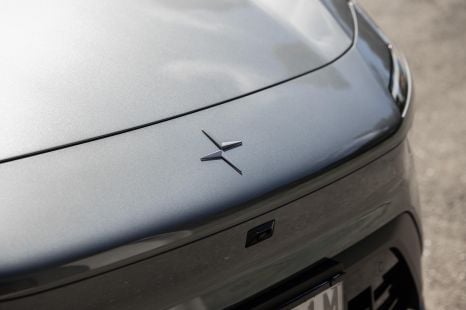

Damion Smy
11 Hours Ago
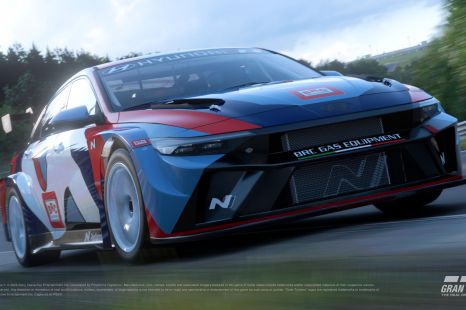

Damion Smy
12 Hours Ago
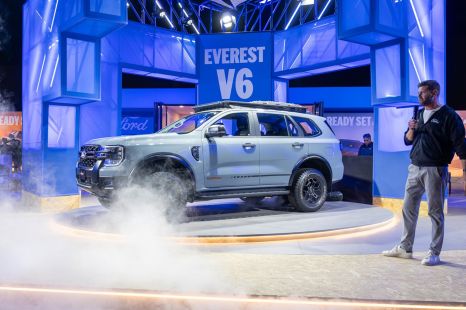

Damion Smy
15 Hours Ago
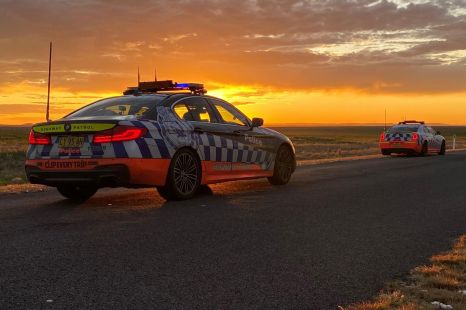

CarExpert.com.au
16 Hours Ago